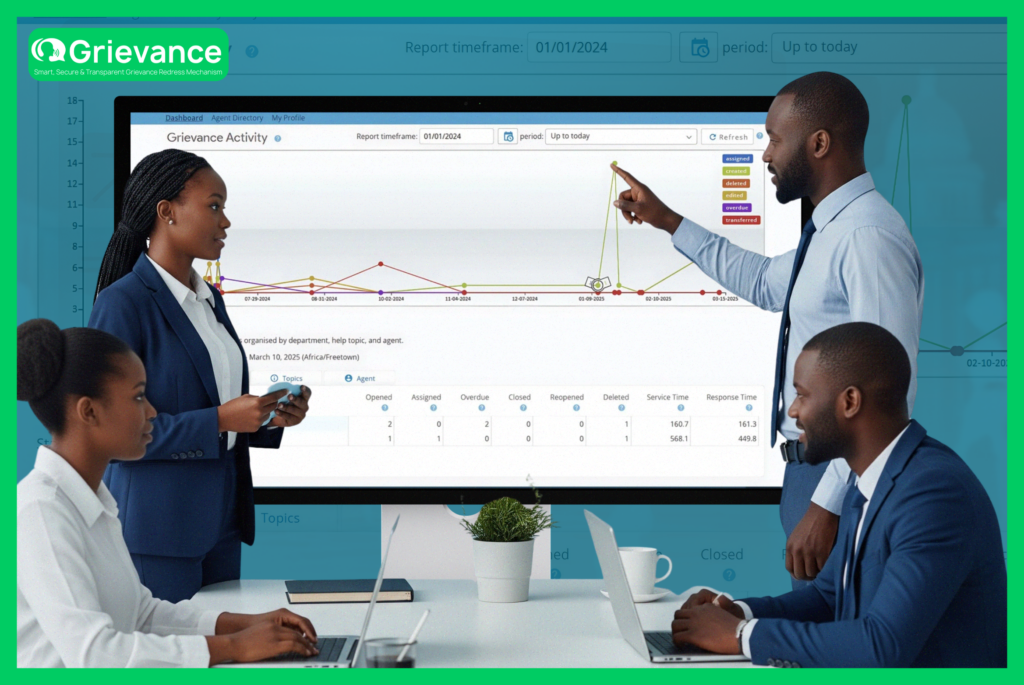How to Measure the Effectiveness of Your Complaint Management Mechanism (Essential KPIs)

In a context where transparency, accountability, and stakeholder satisfaction are central to institutional requirements, having a good complaint management system is no longer enough. It is equally important to measure its effectiveness. How can you determine if your complaint-handling mechanism is truly effective? Which key performance indicators (KPIs) should you track to ensure that every complaint received is addressed in a timely, fair, and transparent manner?
Many organizations implement Grievance Redress Mechanisms (GRMs) without ever evaluating their actual impact. Yet, measuring the performance of your mechanism is crucial for enhancing user trust, optimizing internal processes, and reducing risks. In this article, we present the essential KPIs for effectively managing your complaint management system and identifying areas for improvement.
Why Measure the Effectiveness of Your Complaint Management System?
A well-monitored complaint management system enables you to:
-
Strengthen institutional accountability and good governance.
-
Identify trends and recurring issues.
-
Reduce legal and reputational risks.
-
Improve the quality of services provided.
-
Build trust among users or beneficiaries.
Without clear indicators, it is impossible to know whether your GRM is achieving its objectives or where to focus improvement efforts.
Essential KPIs to Evaluate Your Complaint Handling Mechanism
1. Total Number of Complaints Received
This indicator measures the overall volume of grievances recorded over a given period. An increase may signal improved accessibility of the mechanism… or a rise in encountered problems.
2. Average Handling Time
How much time on average elapses between receiving a complaint and resolving it? An effective GRM is a responsive GRM. This indicator is critical for assessing the system’s speed.
3. Complaint Resolution Rate
What proportion of complaints have been resolved (favorably or not)? This KPI reflects the operational efficiency of your mechanism.
4. Complainant Satisfaction Rate
Measuring post-resolution satisfaction levels helps determine whether users feel their complaints were taken seriously and addressed fairly.
5. Number of Recurring Complaints
A high number of similar complaints may indicate a systemic issue that needs correction. This indicator is strategic for medium- and long-term decision-making.
6. Most Used Reception Channels
Identifying preferred channels (online forms, phone, email, suggestion boxes, etc.) allows you to adjust your accessibility strategy.
7. Complaint Handling Costs
A GRM requires time and resources. Measuring the costs associated with complaint handling helps evaluate the mechanism’s return on investment.
Best Practices for Analyzing and Interpreting Your KPIs
To make the most of these indicators:
-
Implement dynamic dashboards.
-
Distinguish between quantitative KPIs (volumes, timeframes, etc.) and qualitative ones (satisfaction, response quality).
-
Track monthly or quarterly progress.
-
Cross-reference data with other internal indicators (quality, audit, etc.).
Tip: Use tools like Grievance app to centralize, track, and analyze your GRM data in real time.
How to Optimize the Performance of Your GRM?
Once your key KPIs are identified, here are some optimization levers:
-
Train staff responsible for handling complaints.
-
Automate certain steps (acknowledgments, follow-ups, statistics).
-
Regularly update internal procedures.
-
Encourage continuous user feedback.
-
Test complainant satisfaction through anonymous surveys.
An agile system focused on continuous improvement remains the key to effective and credible complaint management.
Conclusion: Manage Your GRM as a True Governance Tool
Measuring the effectiveness of your complaint management system is not optional: it is a must for any organization committed to accountability, quality, and transparency. By tracking the essential KPIs presented in this article, you have a reliable compass to continuously improve your mechanism.
Request a free demo today on Grievance.app and transform your GRM into a lever for sustainable performance.
FAQ – Complaint Management: What You Need to Know
What are the performance indicators for a complaint management system?
The main KPIs include the number of complaints received, handling timeframes, resolution rates, complainant satisfaction, and management costs.
How to Improve Complainant Satisfaction?
By responding quickly, with empathy, and in a personalized manner. It is also essential to incorporate their feedback into the GRM’s continuous improvement.
Which Tool Should You Use to Track Complaint Indicators?
Platforms like Grievance.app allow you to centralize complaint management, automate reports, and visualize performance.
Why Is Complaint Tracking Strategic for an Organization?
It helps prevent disputes, correct malfunctions, and increase stakeholder trust.
What Are the Common Pitfalls in Complaint Management?
Ignoring feedback, delaying complaint resolution, or failing to communicate results to the concerned parties can severely harm an organization’s credibility.
